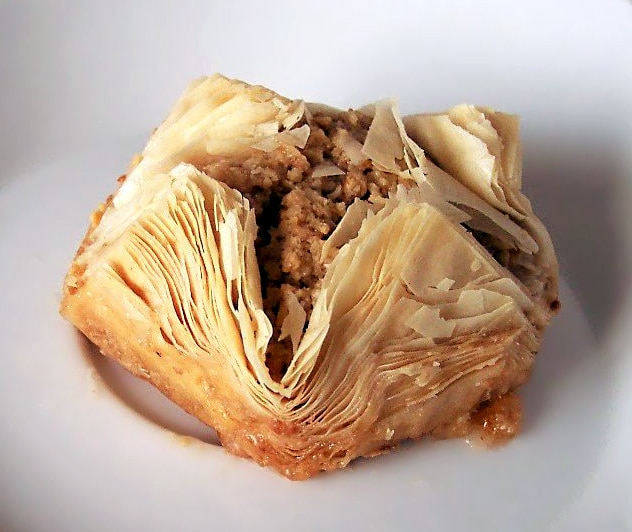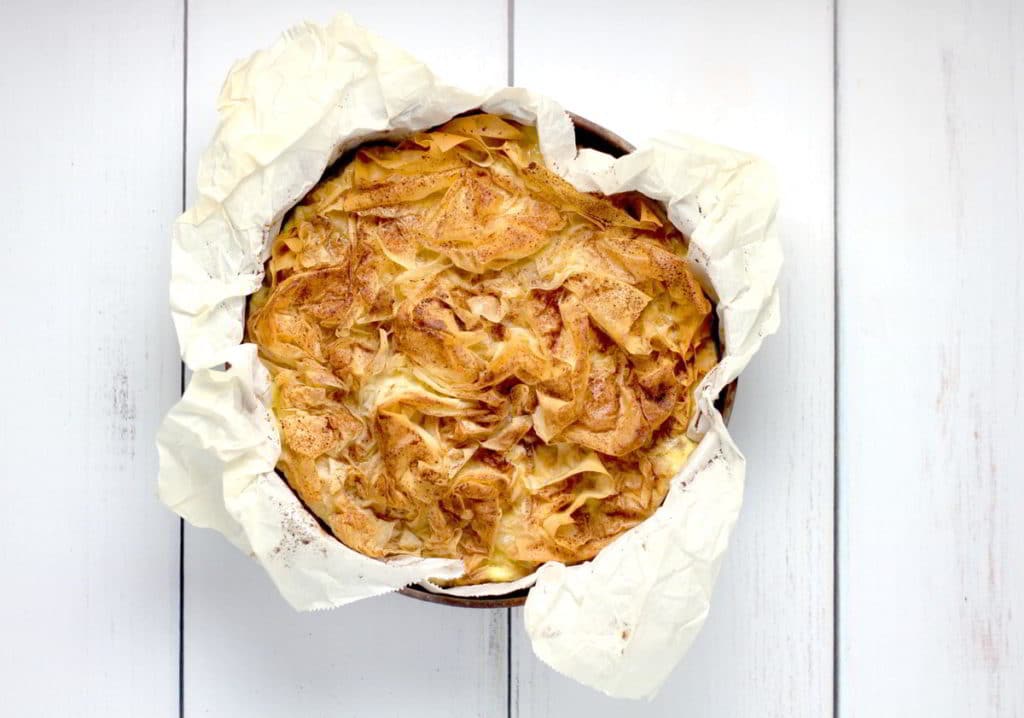
Want to know how to properly and quickly thaw phyllo dough?
Today, I am going to show you two trusted methods to properly thaw frozen phyllo dough, along with detailed step-by-step instructions.
Let’s get started…
What is Phyllo (Filo) Dough?
Popular in Greek and Middle Eastern cuisine. Filo or phyllo is a very thin unleavened dough that is often used for making pastries such as baklava and spanakopita.
Filo-based pastries are made by layering many sheets of the dough, then brushing it with butter or oil. The pastry is then baked.
How is it spelt?
It can be pronounced either phyllo or filo. Those two words are Westernized translations of the Greek word, leaf.
The Greek alphabet is totally different from the English and they do not use either spelling.
User Niko Vasileas, on the popular Q&A site, Quora, explained that The spellings filo and phyllo probably first appeared in the 20th century when the product began being sold in America.
Before Thawing Frozen Phyllo Dough, Know These Important Tips
There are a couple important tips you should know, before you start defrosting your frozen phyllo dough.
If thawed incorrectly, you could end up with unusable pastry sheets.
The tips to know are:
- Don’t thaw too quickly
- Never thaw at room temperature
- Don’t separate till fully thawed
Don’t thaw too quickly: It is important that the phyllo dough does not defrost too quickly (often happens at room temperature).
During thawing, the excess condensation that occurs, can cause the dough to become too damp.
Phyllo is extremely delicate and if damp, you will find that the sheets will stick together, making them unusable.
Never thaw at room temperature: Unless specified on the packaging, phyllo sheets should not be defrosted at room temperature.
According to the Fillo Factory, Doing this step ensures that any frost inside the box won’t dampen the fillo and the sheets won’t stick together.
Don’t separate phyllo sheets until completely thawed. It is best to separate the phyllo sheets once they are fully defrosted.
Phyllo sheets are very delicate and if you try to remove them before they have thawed, there is a high chance that they may crack, tear or sticking together.
Related: How to Thaw Bagels
How to Thaw Phyllo Dough: The 2 Best Options

There are two methods to consider when you are ready to defrost the frozen phyllo dough/sheets.
You can use:
- Overnight in the refrigerator
- The Microwave
Let us look at each method in more detail below.
Overnight in the Refrigerator: Most Reliable Method
Letting phyllo dough sit overnight in the refrigerator to thaw, is the most reliable and trusted method.
While, it is a slow process, the results are guaranteed.
Let us take a look at how to do it.
Instructions
- Take the frozen phyllo dough in its original packaging and place in the refrigerator.
- Let the dough/sheets sit in the refrigerator overnight for 6-8 hours to thaw.
- The guys over at Fillo Factory highlight that the dough should stand at room temperature for 2 hours before using. This ensures that any residual frost in the box won’t dampen the phyllo sheet, which will prevent them from sticking together.
Microwave: Quickest Method
If you are in a rush, the microwave is the quickest way to defrost phyllo sheets/dough.
There is a segment of the cooking world that believes that using the microwave will ruin the dough.
Renowned chef, Alton Brown, has debunked this theory, as he uses the microwave as his go to method for thawing phyllo dough.
In an episode of Good Eats: Switched on Baklava, Alton explains exactly how to work with the finicky dough using the microwave.
Instructions
- Place the phyllo dough in a microwave safe plate.
- Microwave on high for 60 seconds.
- Gently remove each sheet as needed.
Wrapping it up
So, that’s my guide on how to thaw frozen phyllo dough.
Now I’d like to hear from you:
Which method from this guide are you going to try first, the microwave or the refrigerator?
Whichever way, let me know in the comments section below.
I prefer the first method. in the refrigerator leave it overnight and next day i will work as usually
Tahnks
I’ve been making Baklava and Spanakopita (spinach pie) and Tiropita (cheese pie) for a very long time. I’ve never heard of thawing phyllo in microwave and never thought to use this method. I guess in a moment of desperation I may try it. 😩
Thank you! This was helpful. 🙂